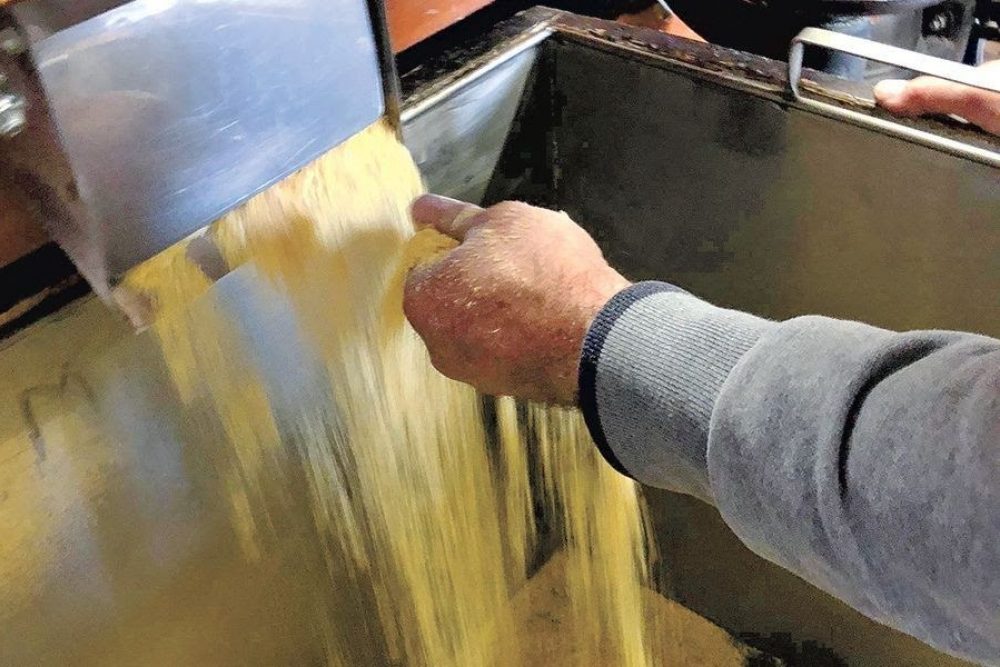The polenta I know—a cornmeal porridge too often too rich and dense with cheese, yet somehow simultaneously tasteless—is a tedium of attention and constant whisking over heat low and slow. It's hard to imagine how Maria Teresa Marino has time for this.
Her family and its centuries old grain mill buzz as she hoists a giant pot of polenta golden, steaming and smooth from the stove to a kitchen table scattered with bread and wine. Her husband, sons and their wives are a flurry, talking business, babies and the bubbles of their local asti spumante, mostly all at once.
But as the polenta is ladled into bowls—topped with a thin red sauce alluringly named bagna d'inferno, or devil's bath—the swirl ceases and spoons are lifted. In that rare quiet, it is obvious—this most definitely is not the polenta I know.
It is light and almost airy, with an aroma sweet like freshly husked corn. The taste is creamy, not cloying. Most surprisingly, the flavor of the corn is bright, clean, singular and strong. This was the polenta I'd come to Italy to learn. Because when done well, it is a comforting foil for rich meats and sauces. Marino shrugs me off. The polenta cooks itself, she explains.
But in her modern but simple kitchen, I began to understand what sets her polenta apart. It isn't what she puts into the cornmeal or what she does to it. Rather, it is what she leaves out and what she doesn't do to it.
There is no cheese. There is no butter. And—best yet—there is little stirring. All of it heresy to conventional polenta wisdom. And yet the evidence that it works—brilliantly so, in fact—sits deliciously on my plate.
She walks me through the recipe, which involves little more than boiling salted water—far more than we are accustomed to—then sprinkling in coarse cornmeal, returning it to a boil and stirring vigorously for 10 minutes. Cover, lower the heat and walk away. After an hour—the Marinos like to let it go longer, but admit it's usually done after about an hour—Maria Teresa uncovers the pot, stirs vigorously again for a few minutes. It's done.
We used Maria Teresa's method for our Soft Polenta and loved the results. Which makes sense, because the science bore out the wisdom of Maria Teresa's method.
Her vigorous initial stirring—always with a whisk, not a spoon—was key; it quickly releases a significant amount of starch from the corn—enough so that continued stirring later is unnecessary—which is gelatinized by the hot water. This produces a thick, smooth polenta in which the cornmeal granules are suspended, rather than sink to the bottom (where they are likely to burn or stick). And that is what allows her—and us—to walk away from the pot during most of the low-heat cooking.
Join the conversation on Facebook, Twitter, Instagram and Pinterest.
And if you're looking for more Milk Street, check out our livestream cooking classes with our favorite chefs, home cooks and friends for global recipes, cooking methods and more.global recipes, cooking methods and more.




